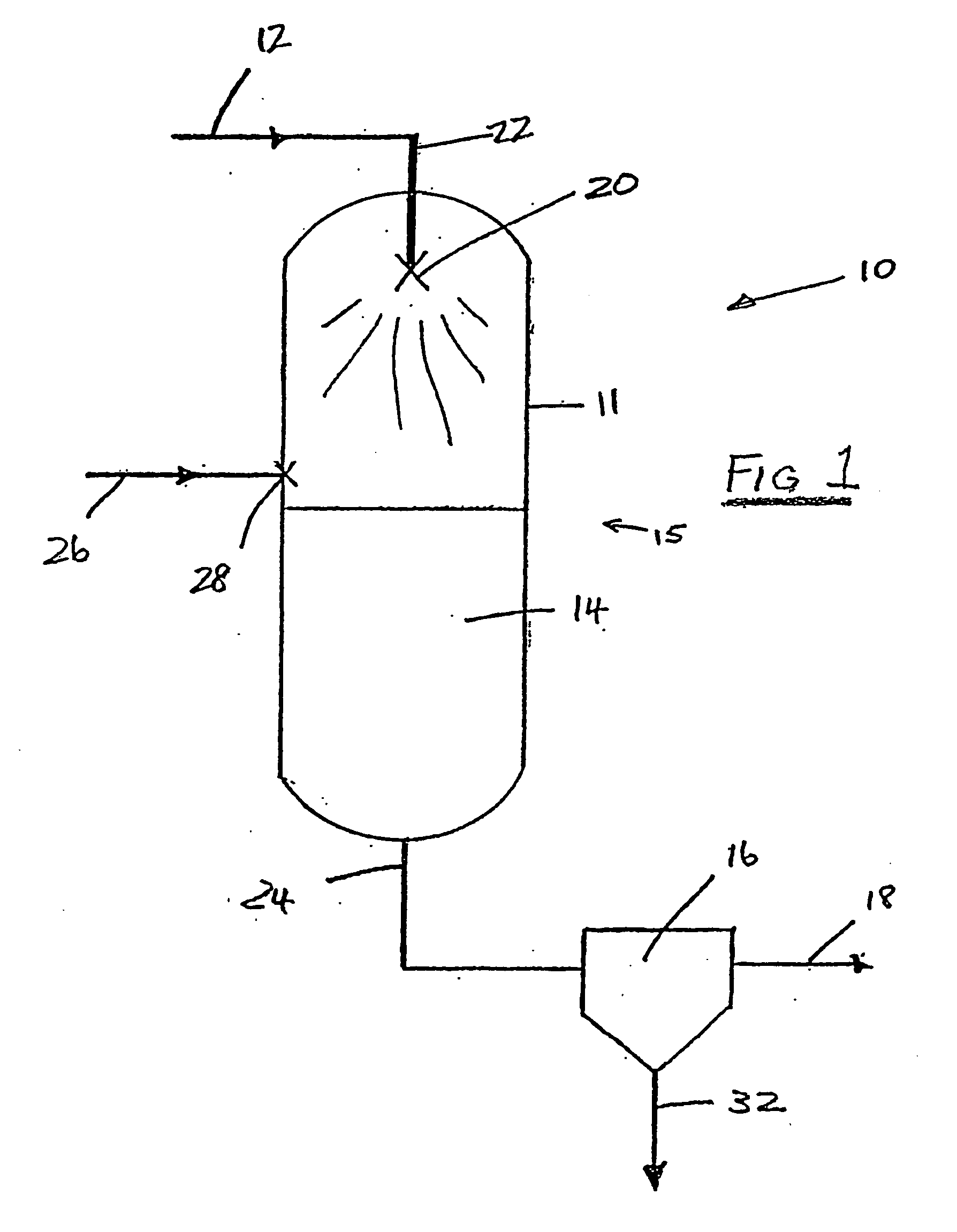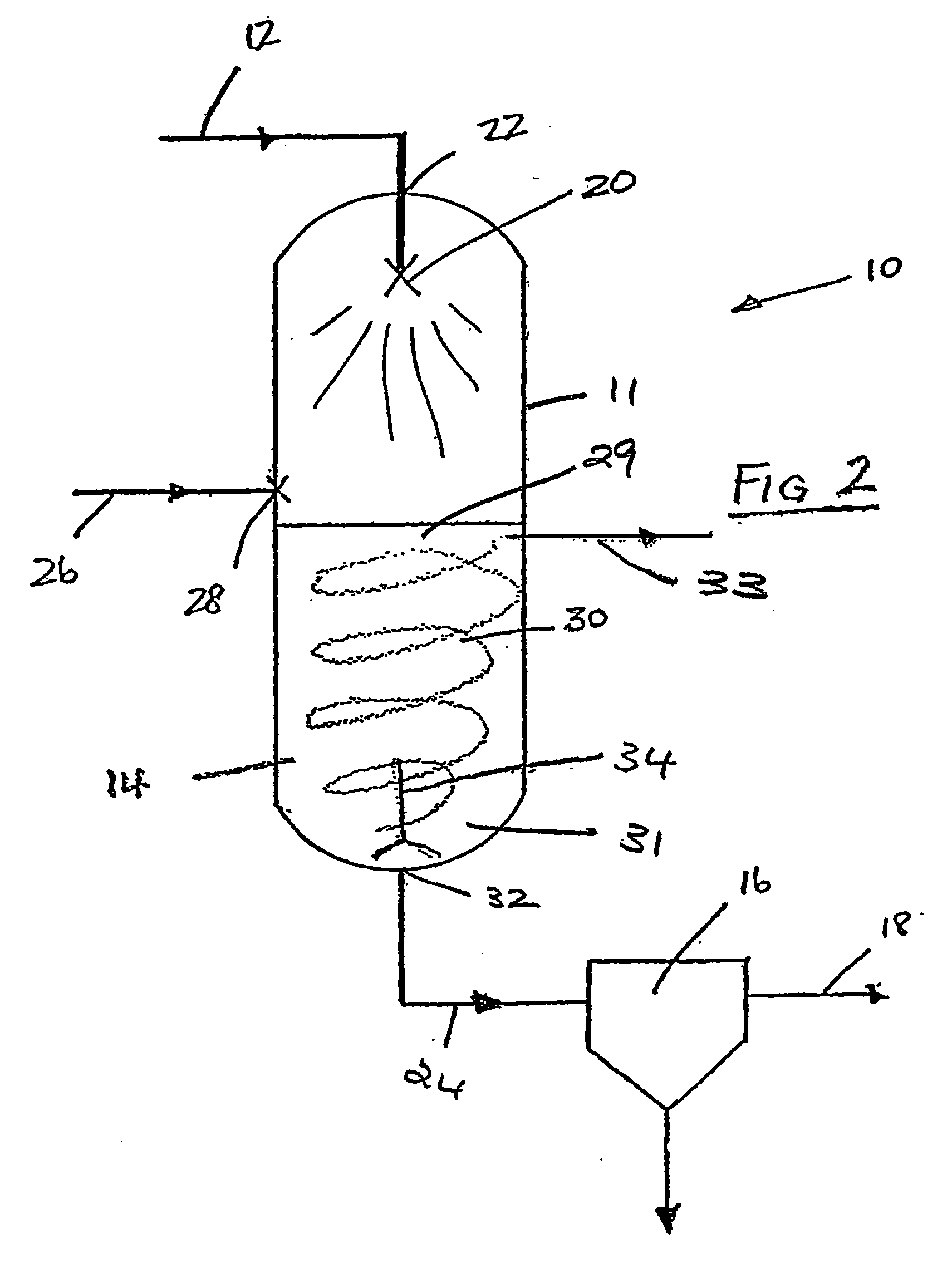Process and device for production of lng by removal of freezable solids
a technology of freezable solids and process, which is applied in the direction of separation processes, gaseous fuels, lighting and heating apparatus, etc., can solve the problems of reducing the service life of cooling vessels, baffles or pipework, and affecting the operation of cooling vessels, etc., and achieves the effect of reducing or eliminating the fouling of cooling vessels
- Summary
- Abstract
- Description
- Claims
- Application Information
AI Technical Summary
Benefits of technology
Problems solved by technology
Method used
Image
Examples
examples
[0091] Tests were conducted on a feed gas containing 25% CO2 introduced at 280 psia and −140° C. Using the method described above, the CO2 content was reduced from 25% to 0.29%. The feed gas contained the following:
ComponentMole FractionN21.939CO224.95C164.64C25.493C32.385IC40.239NC40.292IC50.038NC5+0.023
Note:
The gas includes parts per million amounts of mercaptans.
[0092] After testing, the GC analysis of the LNG produced following separation of the solid contaminants at 145 psia and −140° C. reads as follows:
ComponentMole FractionN21.28CO20.29C194.65C24.48C32.02IC40.21NC40.27IC50.04NC5+0.03
[0093] The mole fraction of CO2 has been reduced substantially from 24.95% in the feed stream to only 0.29% in the LNG outlet stream. The solids collected had the following composition:
ComponentMole PercentageCO295.37C10.37C20.06C30.66IC40.90NC41.92IC50.36NC50.24C60.11
[0094] It will be readily apparent to a person skilled in the relevant art that the present invention has significant adva...
PUM
| Property | Measurement | Unit |
|---|---|---|
| Angle | aaaaa | aaaaa |
| Temperature | aaaaa | aaaaa |
| Pressure | aaaaa | aaaaa |
Abstract
Description
Claims
Application Information
 Login to View More
Login to View More - R&D
- Intellectual Property
- Life Sciences
- Materials
- Tech Scout
- Unparalleled Data Quality
- Higher Quality Content
- 60% Fewer Hallucinations
Browse by: Latest US Patents, China's latest patents, Technical Efficacy Thesaurus, Application Domain, Technology Topic, Popular Technical Reports.
© 2025 PatSnap. All rights reserved.Legal|Privacy policy|Modern Slavery Act Transparency Statement|Sitemap|About US| Contact US: help@patsnap.com



